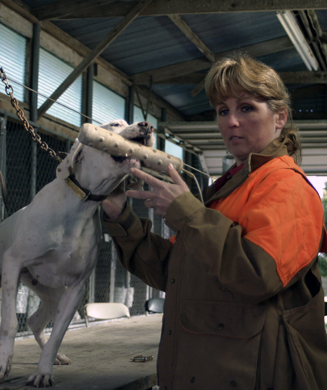




















While the stimulation may be the hardest for trainers to deal with emotionally, it is actually not the hardest part for them to deal with physically. The timing required by the trainer when stimulating the dog's ear or toe is critical. Releasing that physical stimulus as the wooden dowel is place or taken into the dog's mouth is the most important, and according to Potter most difficult, part for novice trainers to correctly carry out.



While the seminar is two days in duration, it's nearly impossible to force fetch a dog in that time. However, participants will have a thorough understanding of the mechanics of the process and can go home and carry out the steps with confidence.





The trained retrieve, or force fetch, is one of most important and difficult aspects of many dog training programs.

